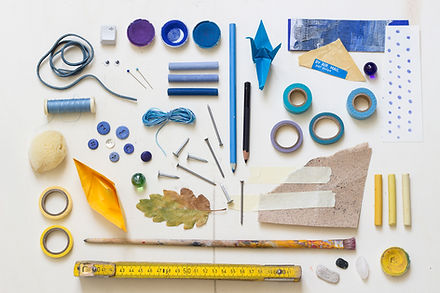
21. Sheet Latex Stretch Factors
An Introduction To Latex Sheeting
I'd like to start this page by pointing out that the instructions here apply to stretch fit designs only. That means designs such as leotards, bodysuits, catsuits, stretchy pants and anything else that's supposed to fit tightly all over. Other sheet latex items such as blouses, skirts and jackets don't need negative ease and so normal pattern making rules apply ... and that's not my field of expertise. So if you're looking for a tight fit all over then read on.
Latex sheeting comes in varying thicknesses. As a general rule, the thicker the sheet, the greater force you need to use to stretch it to the same dimensions. The principle that the thicker it is the less you can stretch it isn't exactly true when we're talking about fashion items ... it'll still stretch if it's thicker, but it really won't be very comfortable and may even cause suffocation, blood restriction or pain. What we're searching for is exactly how much ease reduction to apply to get a comfortable garment. But what is comfortable for one person is different to another ... some like to feel really squeezed and some just want to be held. Thankfully, there is very little difference in ease between the two ... a percentage or two either side of the line is often the difference between too tight and too loose. Take a look at the table below.

From the table you can see that a 0.4mm thick sheet works best with around 10% negative horizontal ease (around the body) when you're not using any vertical reduction (see the section on Principle Stretch Direction if you haven't already). You could use as little as 8% but you'd risk the garment moving around a bit when the wearer bent and twisted. If you used more than 12% the wearer would soon tire from overworking and the latex would heat up and deteriorate over time. Of course if you're using narrow pattern pieces like straps then you might increase the negative ease for those parts just as you would for Lycra/Spandex. Conversely, if your garment has lots of seams in which you are effectively doubling the thickness in those areas, then you might want to reduce the negative ease.
You might also want to reduce negative ease in high movement areas to make the garment more wearable. For example, the crotch section generally requires more ease, so for panties you'd lower the ease in the pattern, but increase the reduction in the binding at the leg line. Other such areas would be the arm pit, knees, elbows and neck. Conversely again, you might stand to benefit from reducing ease further in areas like the lower centre back between the waist and coccyx.
If you apply the appropriate negative ease from the chart above then pattern making is very similar to Lycra/Spandex, and so you should be able to use this website to make most close fit latex garments just as you would ones from Lycra/Spandex.
You do need to remember the latex sheeting reaches its load limitations much sooner and is significantly less forgiving ... meaning the patterns need to be more accurate if you're after a good fit. As a general rule, you won't get a good close fit garment in standard sizing unless the sheeting is thinner and has a high negative ease allowing for greater fit overlap between sizes (opposite to Lycra/Spandex). Thick sheeting will only achieve a good fit if the garment is custom made from specific measurements.
The table above was created by loading 20cm long strips of 5cm wide latex sheet and applying the same load as I would to Lycra/Spandex so as to determine what negative ease to add to be able to use the existing pattern making techniques on this site. The resulting curve above seems to work very well for the few catsuits I've tried so far. Different people may well instruct differing amounts of ease dependant on their own pattern making techniques ... and there's nothing wrong with that! Indeed I'd love to know what percentages others use so I can plot those on the graph and get a field envelope rather than a line.